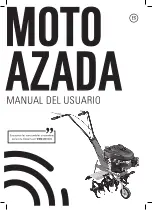
Absorber
Concentrated LiBr solution enters the absorber section of the chiller-heater and is sprayed over
the absorber tube bundle. Because the vapor pressure of the concentrated solution is very low, the
refrigerant (water) vapor from the evaporator flows into the absorber and is absorbed into the LiBr
solution. This mass transfer process lowers the concentration of the LiBr solution as the refrigerant
(water) is absorbed into the solution. This dilution process generates heat and, if not cooled,
would eventually stop as the solution temperature would rise with a corresponding rise in vapor
pressure. This would be similar to closing the vanes or slowing down a centrifugal compressor on a
centrifugal chiller where the load was constant. The water flowing inside the absorber tube bundle
comes from the cooling tower and serves to cool the LiBr solution as it flows down over the tube
bundle. This allows the absorption process to continue and the solution becomes more diluted as
it absorbs more refrigerant vapors. When the LiBr solution reaches the bottom of the absorber
section, it goes into the suction of the solution pump. The liquid is then pumped to the generators.
Figure 4: Evaporator-absorber
Plate type heat exchangers
The dilute (weak) LiBr solution leaving the absorber section is pumped through various plate type
heat exchangers (such as the low temperature heat exchanger, LTG refrigerant condensate heat
exchanger, and high temperature heat exchanger) before it enters the high temperature generator
and low temperature generator sections. These plate type heat exchangers provide cycle efficiency
by preheating the dilute solution. Preheating the dilute solution reduces the consumption of the
driving heat source in the high temperature generator section. The concentrated solution flows out
of the generators and back through the various heat exchangers.
Model YHAU-CGN/H-CXR(M)Double Effect Direct Fired Small Absorption Chiller-Heater
16
















































